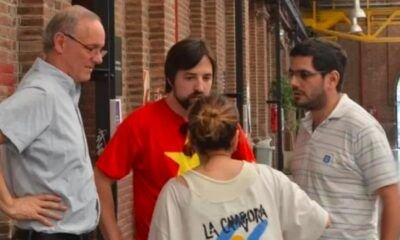INTERNACIONAL
Mexican sewage gushing into Navy SEAL training waters is US’ ‘next Camp Lejeune,’ vets warn
«Disgusting,» said Navy SEAL veteran Rob Sweetman in describing the smell and mist of Mexican sewage spewing into U.S. waters as he stood on a hill overlooking the Tijuana River estuary in California.
Sweetman, a Navy veteran who served on the SEALs for eight years, spoke to Fox News Digital to sound the alarm on a water crisis rocking the San Diego area, including where SEALs train, taking a camera with him to show viewers firsthand how the contaminated water flows into the U.S.
Just one mile away from where Sweetman spoke, SEALs and candidates train in the same water, which has sickened more than 1,000 candidates in a five-year period, per a Department of Defense watchdog report released in February.
San Diego and the surrounding area are in a clean-water crisis that has raged for decades, but it is finding revived concern from the Trump administration as SEALs and local veterans warn of a «national security crisis» that they say is on par with the Camp Lejeune, North Carolina, water crisis.
Thousands of Marines and others were sickened at North Carolina’s Camp Lejeune base between 1953 and 1987 as a result of water contaminated by industrial solvents used to drink, bathe and cook at the training facilities and on-base housing.
EPA CHIEF TAKES ON MEXICAN ‘SEWAGE CRISIS’ FLOWING INTO US WATERS WHERE NAVY SEALS TRAIN
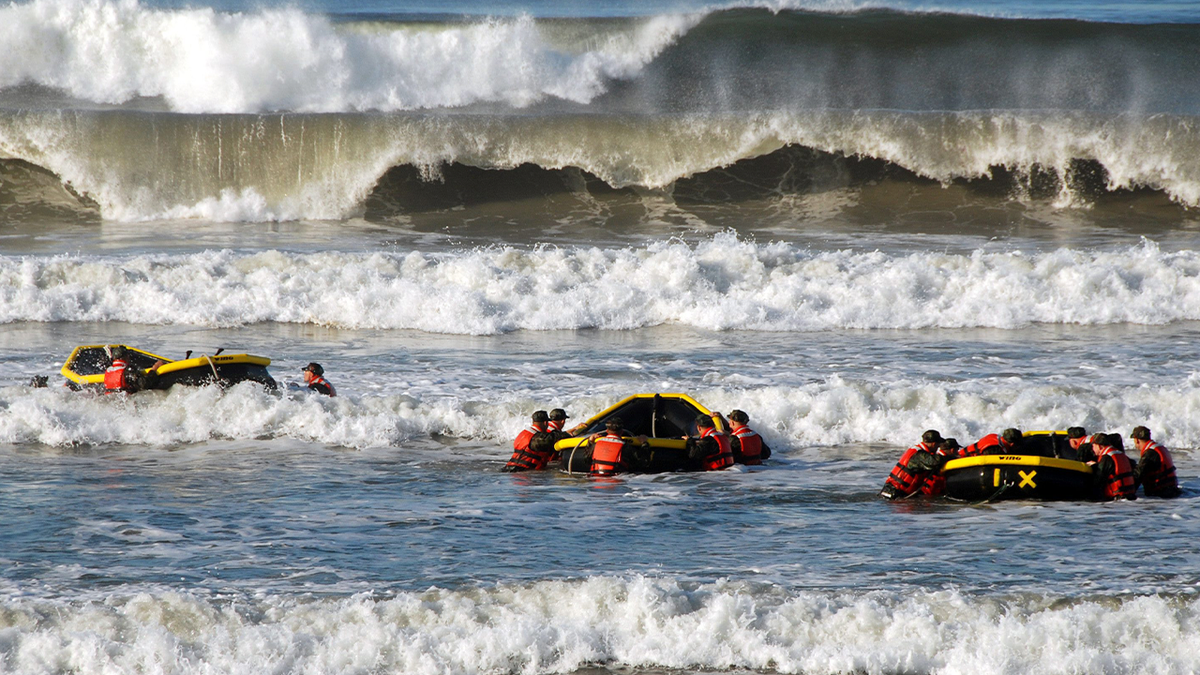
The Basic Underwater Demolition/SEAL (BUD/S) class participates in a surf passage training exercise at Naval Amphibious Base Coronado in Coronado, California. (Getty Images)
Kate Monroe, a Marine Corps veteran and CEO of VetComm — which advocates for disabled veterans and those navigating the VA’s complicated health system — told Fox Digital in an April Zoom interview, «San Diego County is as big as some states. It’s giant. Millions of people live here and are breathing the air of this water. It goes well beyond the military. It’s a crisis. It’s a FEMA-level travesty, and we have just been hiding it.»
The Navy has deep roots in the San Diego area, with the United States Naval Special Warfare Command headquartered in America’s Finest City and where Navy SEAL candidates complete their arduous six-month Basic Underwater Demolition/SEAL (BUD/S) at the Naval Amphibious Base Coronado.
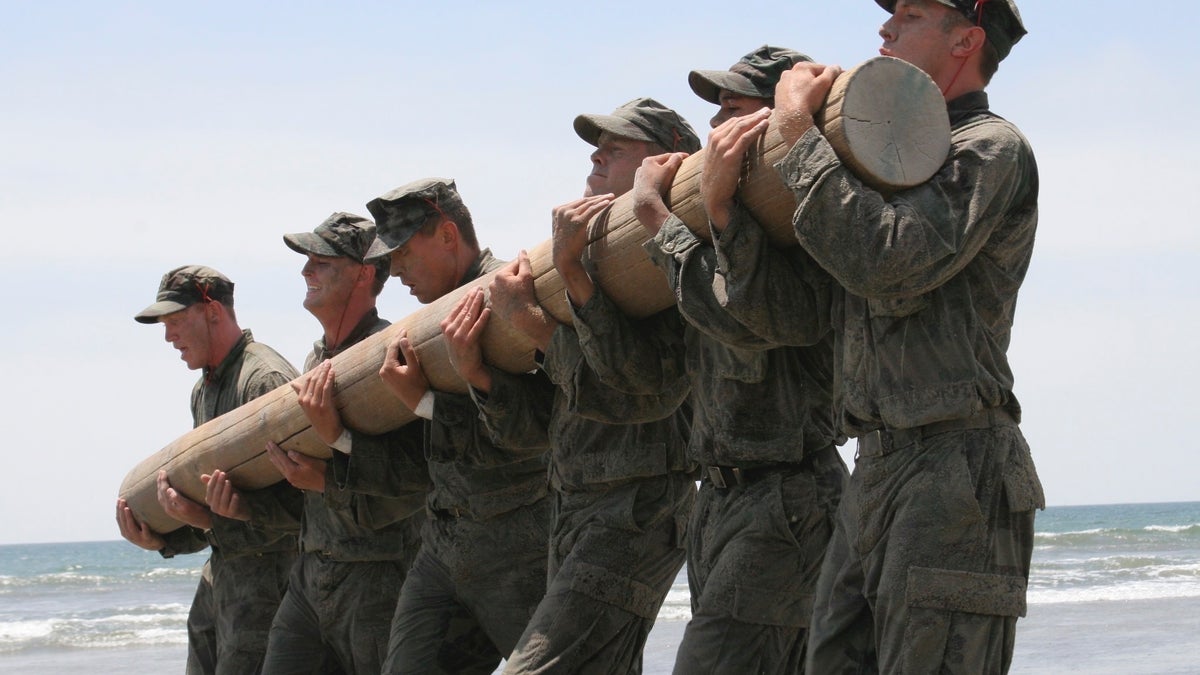
Naval Special Warfare Center reported 1,168 cases of acute gastrointestinal illnesses among SEAL candidates between January 2019 and May 2023 alone. (Jeff Gum)
The sewage problem flowing from neighboring Mexico into the U.S. has percolated in San Diego for years.
But the water crisis hit crisis level when it was reported in 2024 that 44 billion gallons of contaminated water imbued with raw sewage was released along the California coast in 2023, the most on record since at least 2000, the Los Angeles Times reported at the time.
The issue of sewage water flowing into U.S. waters is largely attributed to outdated wastewater infrastructure across the southern border, local media outlets recently reported, with Mexico reportedly in the midst of addressing its infrastructure to curb the leaks of sewage water.
The Tijuana River has for decades been plagued by sewage and waste that has affected its beaches and neighboring San Diego.
In February, the Department of Defense’s inspector general released a report finding that the Naval Special Warfare Center reported 1,168 cases of acute gastrointestinal illnesses among SEAL candidates between January 2019 and May 2023 alone.
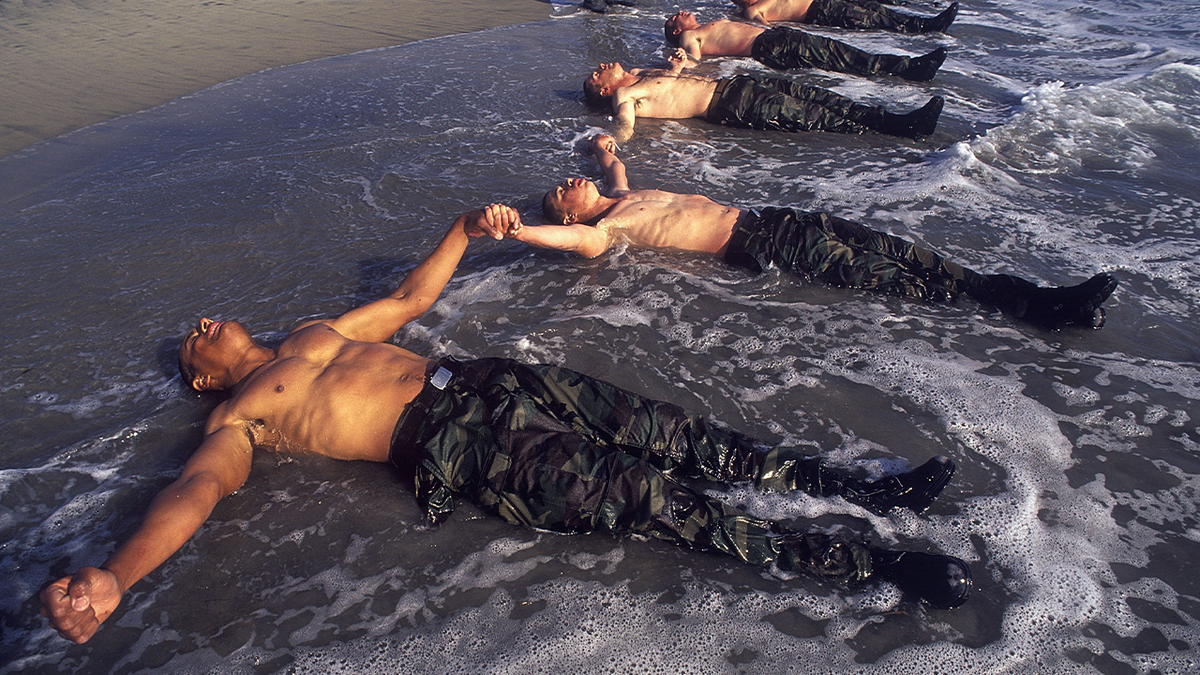
Navy SEAL trainees are shown during Hell Week. (Getty Images)
«Navy SEAL candidate exposure to contaminated water occurred because (Naval Special Warfare Command) did not follow San Diego County’s Beach and Bay Water Quality Program’s beach closure postings,» the inspector general report found. «As a result of Navy SEAL candidate exposure to contaminated water during training, candidates are presented with increased health risks and NAVSPECWARCOM’s training mission could be impacted.»
‘IBS, GERD, skin issues, weird cancers’
It was when Monroe, who is well-versed with veteran health through VetComm, was working with SEALs who were retiring that she realized the severity of the San Diego water pollution of the past few years.
She observed an increase in health claims related to intestinal issues and «weird cancers,» which was a departure from typical claims related to PTSD or orthopedic ailments.
US SENATOR BLASTS PRESIDENT OF MEXICO, SAYS TOXIC SEWAGE DUMP THREATENS ‘NATIONAL SECURITY’
«I started creating relationships with the SEAL teams, the people that were exiting the SEALs, you know, at 14 years, 20 years, nearing their retirement,» Monroe told Fox News Digital. «And the claims that we were making for these guys were surprising to me because a lot of them, they have combat PTSD, a lot of orthopedic issues. But we were having guys coming to us with, like, IBS, GERD, skin issues, weird cancers, and they were all attributing it to their time spent in San Diego training to be a SEAL in that water here that we have in San Diego.»
Swimming and spending time in water contaminated with feces can lead to a host of illnesses, including bacterial, viral and parasitic infections that leave people nauseous, vomiting and rushing to the bathroom.
Navy SEAL vet Jeff Gum was only days from entering the SEAL’s aptly named Hell Week — the fourth week of basic conditioning for SEAL candidates — when nausea hit him. He was trapped in a cycle of drinking water and vomiting when he realized a serious illness had its grips on him.
Gum is a retired SEAL who served from 2007 to 2017 and was exposed to the contaminated water in 2008 during BUD/S training off the San Diego coast.
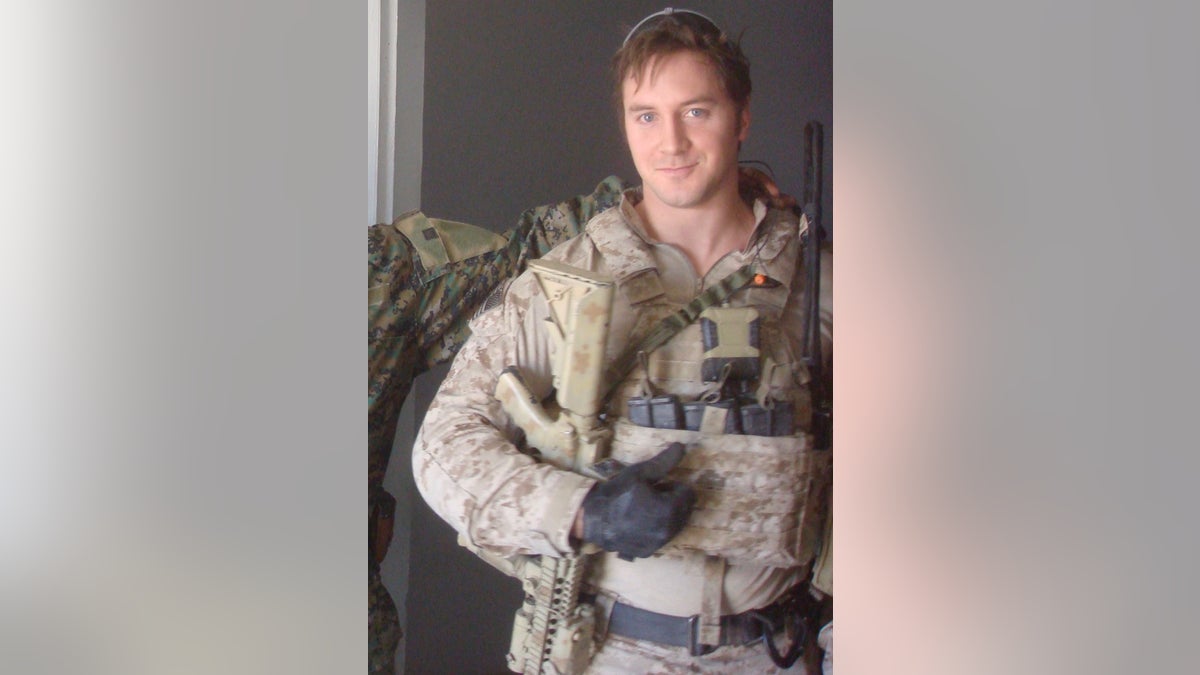
Navy SEAL vet Jeff Gum (Jeff Gum)
«I couldn’t stop,» Gum recounted of how he couldn’t keep water down without vomiting. «You never really want to go to medical because they can pull you out or make you get rolled to the next class, but I couldn’t even drink water without throwing up. It’s the only time in my whole life that this has happened.»
Gum’s nausea overcame him on a Friday in 2008, with Hell Week kicking off that Sunday night. Hell Week is a more than five-day training that puts candidates through rigorous training, including cold-water immersion, «surf torture,» buoy swims, mud runs, all while operating on minimal sleep.
SAN DIEGO SUBURB FACES ‘SEWAGE CRISIS’ FROM LOCAL BEACH

Navy SEAL vet Jeff Gum in Iraq. (Jeff Gum)
«The sun goes down, and the instructors come out with big machine guns, that kicks it off,» Gum said of how Hell Week began. «We run out to the beach, right into the ocean. You spend the rest of the week soaking wet, covered in sand. And everywhere you go, you have a 200-pound boat on your head that you and your boat crew of six to seven guys will share the weight of, and you just run everywhere.»
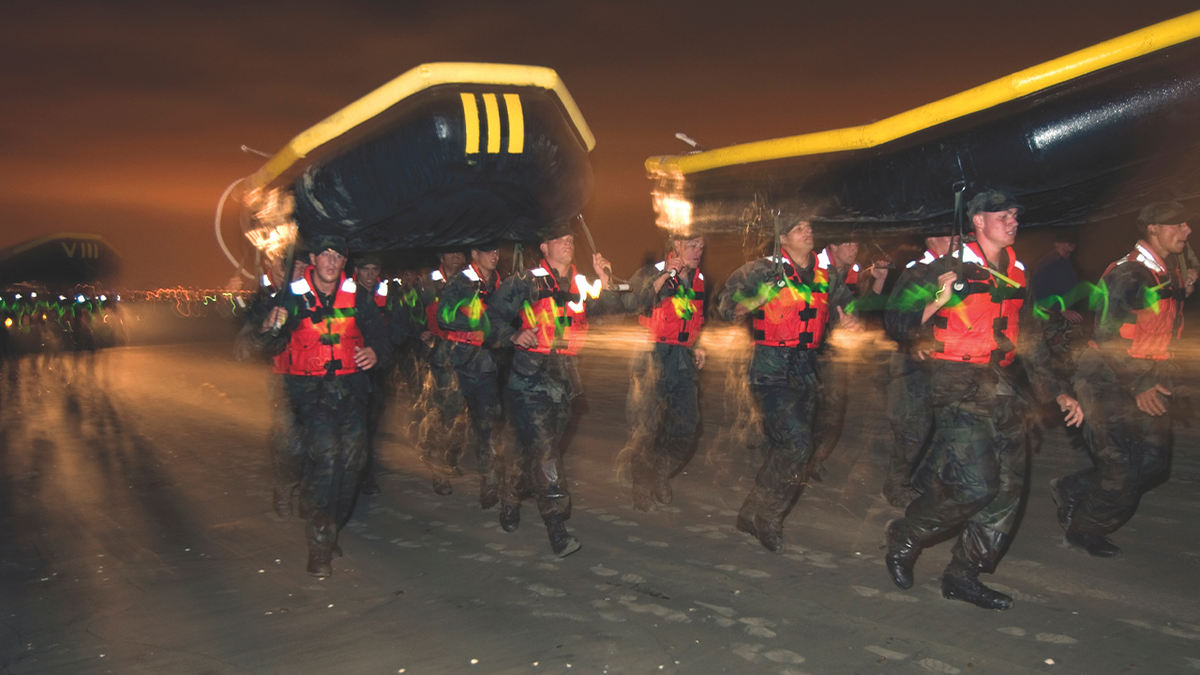
Hell Week training for the SEALs includes carrying boats. (Getty Images)
«You’re just in the water. There’s no escaping it. It’s part of what makes BUD/S BUD/S. And it’s part of what makes the Navy SEALs America’s premier maritime special operators,» he said. «There’s not getting around how comfortable we have to be in the water. Cold, wet, miserable, doesn’t matter, we suck it up and we do it.»
MEXICO IS POISONING SOUTHERN CALIFORNIA IN A BORDER CRISIS ALMOST NO ONE KNOWS ABOUT
Gum received IVs the weekend ahead of Hell Week and was able to keep food and water down by the time the intense training began, but he had been diagnosed with viral gastroenteritis, commonly known as the stomach flu and highly contagious, which then morphed into rhabdomyolysis due to exerting so much energy while dehydrated from viral gastroenteritis
Rhabdomyolysis is a serious illness that causes muscle to break down quickly and can lead to «muscle death» and the release of high levels of myoglobin in the blood that can injure a person’s kidneys.
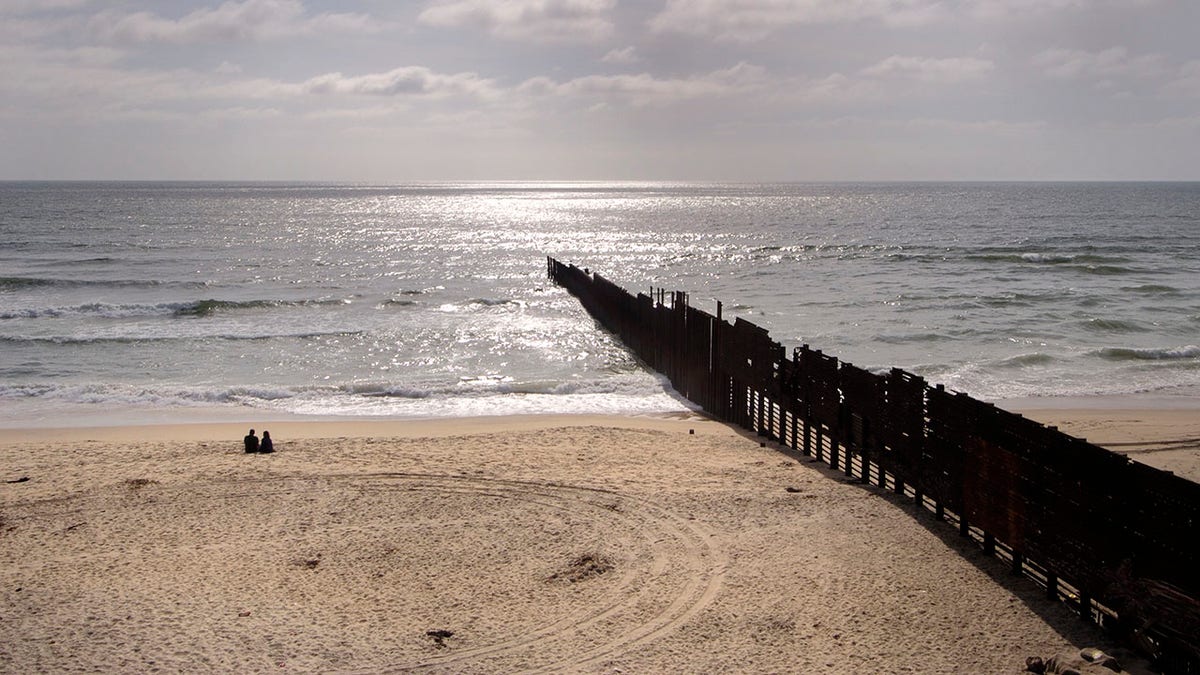
The border fence between Imperial Beach near San Ysidro, California, right, and Playas de Tijuana near Tijuana, Mexico. (Getty Images)
Gum failed the first phase of BUD/S, but he was granted permission to return to training for a second time after senior leaders saw he had viral gastroenteritis. Gum again went through the first phase of BUD/S, but again he went to medical, where tests showed that his «blood came back toxic» from rhabdomyolysis.
The SEAL was put on medical leave and able to fully recover in his home state of Pennsylvania before he «crushed» the hellish training on his third try. He served on SEAL Team Five, deployed to Fallujah, Iraq, and taught combatives and prisoner handling to SEAL trainees in San Diego from 2013 until his retirement in 2017.
Sweetman told Fox Digital that «everyone who goes through training is going to get sick.»

Tijuana, Mexico, top, and San Diego (Getty Images)
«They’re going to get infections, and it’s terrible,» Sweetman told Fox Digital in an April Zoom interview. «And some might argue that this is Navy SEAL training. You have to go through the toughest conditions to be able to survive and make it. I would say that it’s gotten a little bit out of hand.»
The SEAL vet, who lives in the San Diego area, said the issue has gotten worse in recent years as Tijuana’s population grows.
I TRAINED WITH THE NAVY SEALS FOR A DAY. THIS IS WHAT I LEARNED
«When I went through training, it was absolutely a thing that they’d shut down the Imperial Beach because the ocean water was so bad, because the waste coming from Tijuana had infected the water,» Sweetman said. «You could always smell it. And oftentimes, even in the bay, we’d need to wash our wet suit after being out on a swim.»

Rob Sweetman served eight years as a Navy SEAL. (Rob Sweetman)
«Now, some of the training causes us to be deeply immersed in the water, and infections and all types of things can come up from being in the water. But I’ll say that it has gotten significantly worse as the population has doubled in Tijuana.»

Raw sewage from Tijuana is flowing into the San Diego area, causing illness to spread among SEALs and candidates. (Rob Sweetman)
‘A huge national crisis’
Gum and Monroe both said that water issue is a crisis, with Gum identifying it as a national security crisis that could cull well-suited candidates from the SEALs due to acute illnesses as well as sicken active SEALs.
«This is a huge national crisis,» he said. «Like half the SEAL teams are located in San Diego, the other half are in Virginia Beach. So when you’ve got half the SEAL teams who are getting exposed to this, then it’s a major issue.»
Monroe called it the «next Camp Lejeune» crisis, which sickened Marines with contaminated drinking water at the North Carolina Marine Corps base camp for nearly three decades. The crisis has cost the U.S. billions of dollars, including legal costs and settlements to vets and their families.
«This is going to be, in my opinion, the next Camp Lejeune water problem that cost our government $21 to $25 billion,» she said. «That’s just in the compensation directly, like the lawsuit portion of it. That doesn’t cover all the compensation you have to pay these veterans tax-free for the rest of their lives. I would say that this issue here in San Diego, if you look at it over the time that people have been training here, you’re looking at another $21 to $25 billion, plus all of the compensation that’s going to come. It would be cheaper for our country to fix this than it would to allow it to continue.»
The three veterans who spoke to Fox Digital all responded with optimism that the Trump administration will tackle the crisis and end it.
WILL CAIN, NAVY SEALS HONORS VETERANS AT 2024 NYC SEAL SWIM
Fox Digital exclusively reported earlier in April that EPA Administrator Lee Zeldin is heading to San Diego to meet with SEALs and see the crisis firsthand April 22, 2025.

EPA Administrator Lee Zeldin is heading to San Diego to meet with SEALs and see the water firsthand April 22, 2025. (Andrew Harnik/Getty Images)
«The raw sewage flowing from Mexico into the Tijuana River is creating serious, detrimental issues for communities with affected waterways,» Zeldin told Fox Digital ahead of the Tuesday trip.
«Ensuring America’s waters are clean is part of EPA’s core mission, and I look forward to being on the ground in San Diego in a few days to assess the situation and hear directly from those affected,» he said. «It is top-of-mind knowing that as this issue persists, more and more Navy SEALs remain at risk of sickness because of the contaminated waterways they train in. I strongly believe the time has come to finalize and implement an urgent strategy to end decades of raw sewage entering the U.S.»
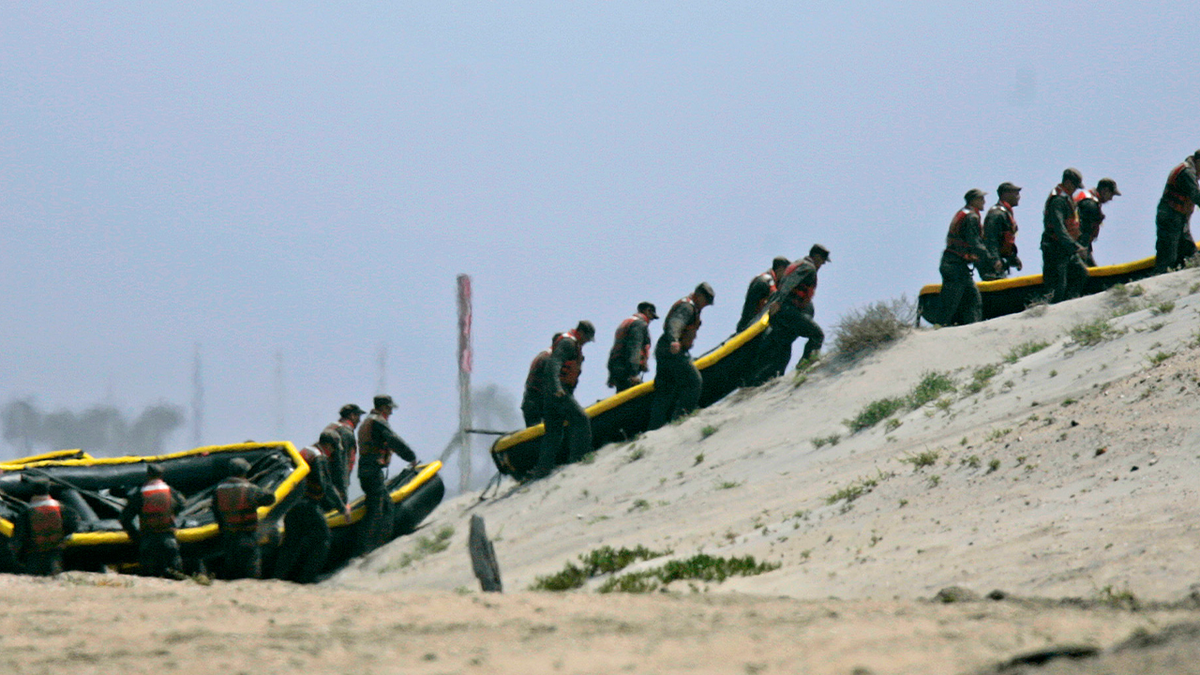
BUD/S students participate in SEAL training at the Naval Special Warfare Center, Naval Amphibious Base in Coronado, California. (Gina Ferazzi/Los Angeles Times via Getty Images)
A spokesperson for Naval Special Warfare added in a comment to Fox News Digital that SEALs and candidates’ health are a top priority and that officials are monitoring water quality in areas where they train.
«The Navy takes the health and safety of our personnel very seriously,» the spokesperson said. «Water quality at Navy training locations on the beach waterfront is closely monitored in coordination with local authorities. We are fully committed to ensuring warfighters at U.S. Naval Special Warfare Command train in a safe environment.»
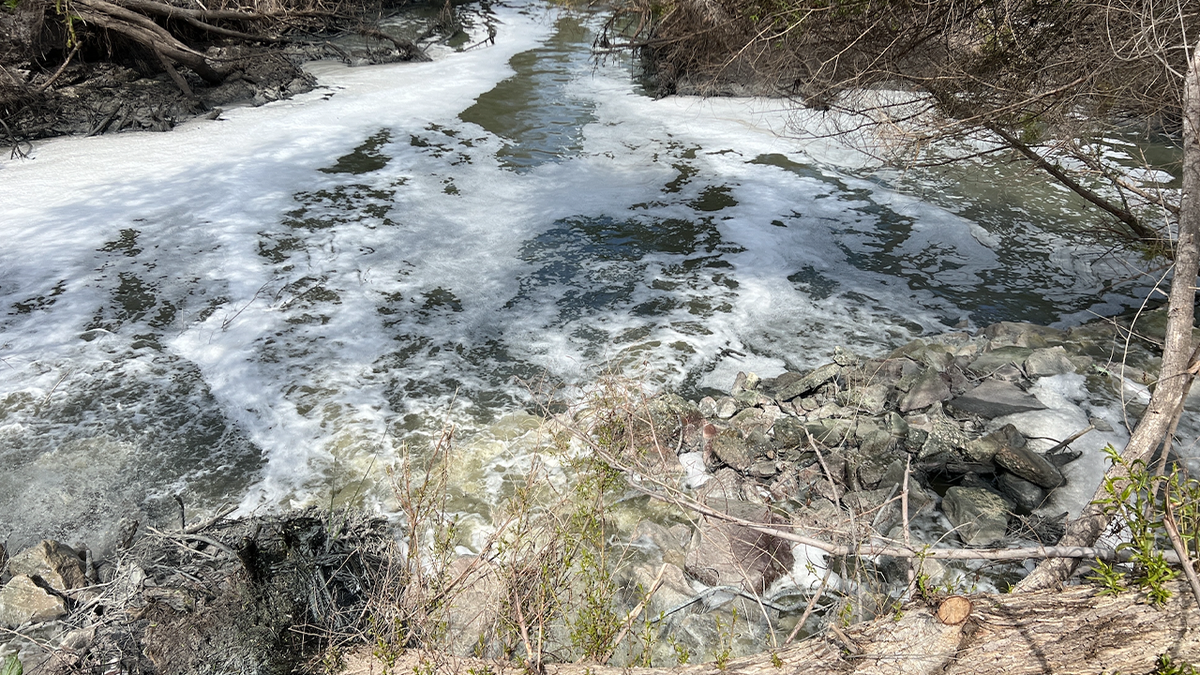
Mexican sewage flows into the U.S. (Rob Sweetman)
Ahead of Zeldin’s visit, the water flowing from Mexico into the U.S. is as «nasty» as ever, according to Sweetman.
«What I see here is a tremendous amount of green, nasty water,» Sweetman said while pointing at the murky water. «I mean, you can smell it. This is disgusting. As it pours through, it doesn’t clear up. There’s no clarity to it. It just turns into a foam. And the foam sits on top of the water where it’s murky and it just continues to flow towards Imperial Beach and the ocean down here.»
CLICK HERE TO GET THE FOX NEWS APP
«It’s absolutely disgusting. I can’t comment strongly enough about how bad it is to be here. I’m here specifically because I want people to see just how bad it is,» he said. «The moment that I leave here, I’m going to go take a shower.»
US Navy,California,Mexico,MILITARY,National Security,Politics,Donald Trump,Lee Zeldin
INTERNACIONAL
113 House Dems vote against GOP resolution to condemn Boulder attack on pro-Israel activists

NEWYou can now listen to Fox News articles!
More than 100 Democrats voted against a House GOP-led resolution to condemn the accused terror attack in Boulder, Colorado.
It passed 280-113, with 75 Democrats joining Republicans to vote for the bill. Six lawmakers, five Democrats and one Republican, voted «present.»
The legislation was introduced by Rep. Gabe Evans, R-Colo., last week in response to the attack. But Democrat lawmakers made clear they were opposed to language in the resolution that they felt was politically charged.
In addition to condemning the attack, Evans’ resolution also appeared to rebuke blue-leaning sanctuary jurisdictions that were at odds with federal immigration authorities, and he condemned illegal immigrants who overstay their visas as well.
A second bill, led by Reps. Jeff Van Drew, R-N.J., and Joe Neguse, D-Colo., more broadly condemned the rise in antisemitic attacks in the U.S. That legislation netted much wider bipartisan support, passing 400-0, with just two lawmakers voting «present.»
HOUSE GOP TARGETS ANOTHER DEM OFFICIAL ACCUSED OF BLOCKING ICE AMID DELANEY HALL FALLOUT
Police work at the scene after an attack that injured multiple people in Boulder, Colo., on June 1, 2025. (Reuters | Fox News Digital)
But Evans’ resolution more specifically noted that the case of terror suspect Mohammed Sabry Soliman, who overstayed a tourist visa and a subsequent work authorization, «demonstrates the dangers of not removing from the country aliens who fail to comply with the terms of their visas.»
The Egyptian national is facing federal charges after allegedly attempting to set fire to peaceful demonstrators who were protesting Hamas’ continued possession of Israeli hostages in Gaza.
The Trump administration has vowed that he and his family will be deported from the U.S.
Evans’ resolution also «affirms that free and open communication between State and local law enforcement and their Federal counterparts remains the bedrock of public safety and is necessary in preventing terrorist attacks» and it «expresses gratitude to law enforcement officers, including U.S. Immigration and Customs Enforcement personnel, for protecting the homeland.»
It comes as Democrat-controlled cities like Los Angeles and Nashville, Tennessee, have seen their leaders criticize the Trump administration’s ICE crackdown.
The Trump administration’s handling of anti-ICE riots in Los Angeles has spurred an outpouring of scorn from Democrat officials, particularly the decision to send National Guard troops in to break up the demonstrations.
House Minority Leader Hakeem Jeffries, D-N.Y., criticized Evans’ resolution in comments to reporters on Monday.
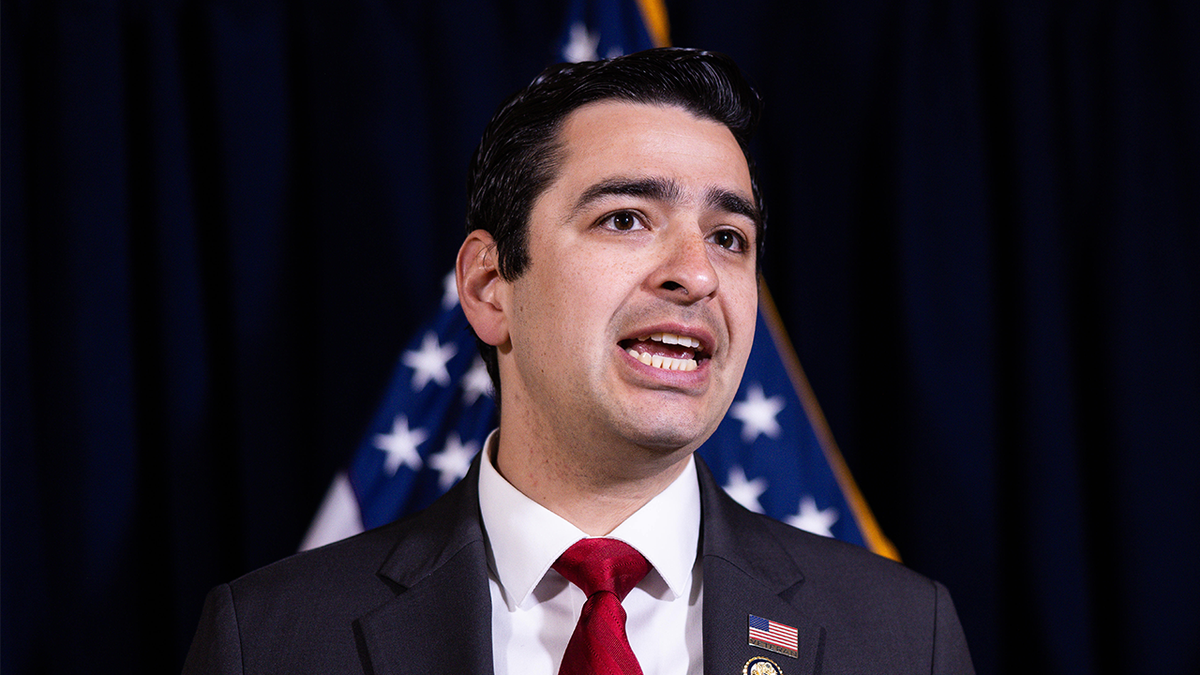
Rep. Gabe Evans led the resolution. (Tierney L. Cross/Getty Images)
«Who is this guy? He’s not seriously concerned with combating antisemitism in America. This is not a serious effort,» Jeffries said. «Antisemitism is a scourge on America. It shouldn’t be weaponized politically.»
Jeffries also called Evans «a joke.»
Evans responded on X, «I served our nation in uniform in the Middle East, as a cop in Colorado, & now as a Congressman. This wildly offensive sentiment from Democrat’s Leader is why antisemitism persists. The Left is unserious about finding real solutions.»
Rep. Dan Goldman, D-N.Y., who is Jewish, also criticized Evans’ resolution.
MEET THE TRUMP-PICKED LAWMAKERS GIVING SPEAKER JOHNSON A FULL HOUSE GOP CONFERENCE
«You weren’t here, Mr. Evans, last term, but there were about 10 antisemitism resolutions that effectively said the same thing solely to score political points. We Jews are sick and tired of being used as pawns,» Goldman said during debate on the bill.
CLICK HERE TO GET THE FOX NEWS APP
But Van Drew, who is leading a bipartisan resolution that similarly condemns antisemitism but does not discuss immigration, defended Evans’ measure.
«Yes, it is different than mine. Mine focused purely on antisemitism here in the world. But he brings up a valid point not only for Jews, but for many innocent victims. Whether it was Laken Riley, whether it was the women that were raped, the women and men that were killed, those that were beaten, those that were hurt, who were in law enforcement. Illegal immigration is not a good thing,» Van Drew said.
The two lawmakers who voted «present» on Van Drew’s resolution were Reps. Rashida Tlaib, D-Mich., and Marjorie Taylor Greene, R-Ga.
Greene wrote on X after the vote, «Antisemitic hate crimes are wrong, but so are all hate crimes. Yet Congress never votes on hate crimes committed against white people, Christians, men, the homeless, or countless others. Tonight, the House passed two more antisemitism-related resolutions, the 20th and 21st I’ve voted on since taking office. Meanwhile, Americans from every background are being murdered — even in the womb — and Congress stays silent.»
INTERNACIONAL
Brasil: comenzaron los interrogatorios a Jair Bolsonaro y sus colaboradores, acusados de intento de golpe de Estado

Los otros acusados
Brasil,Lula Da Silva,Jair Bolsonaro
INTERNACIONAL
Power players or baseball players? The history behind the Congressional Baseball Game

NEWYou can now listen to Fox News articles!
Washington is stocked with power players. The president. White House officials. Cabinet secretaries. U.S. Representatives. Senators. Powerful aides. Lobbyists. Journalists.
But how about baseball players?
Democrats and Republicans convene Wednesday night at Nats Park just blocks from the Capitol for the annual Congressional game.
REPORTER’S NOTEBOOK: LAWMAKERS TAKE TO THE FIELD IN STRANGE SPECTACLE OF ANNUAL CONGRESSIONAL BASEBALL GAME
Since 1909, Democrats and Republicans have traded in conference committees for mound visits.
The Congressional Record for scorecards.
And parliamentarians for umpires.
Republicans are looking to keep their winning streak alive at this year’s Congressional Baseball Game. (Bill Clark/CQ-Roll Call, Inc via Getty Images)
Rep. Roger Williams, R-Texas, is a former Atlanta Braves farmhand. He gets his squad out on the practice diamond nearly every morning when lawmakers are in session at 5:45.
«We’ve been working out since March 1,» said Williams. «I think we’re as good as we were last year.»
However, he noted that springtime rain limited practice time. And, an injury might beset the GOP squad.
House Republican Conference Vice Chairman Blake Moore, R-Utah, started in center field for Republicans last year. Moore is one of the best overall athletes for either team. Moore won the high school Heisman Trophy in 1997. However, Moore injured his collar bone diving to make a save as a goalie in the Congressional soccer game a few weeks ago.
Yes, there’s a Congressional soccer game, too. And flag football game. And basketball game. And hockey game.
And voters sometimes wonder why nothing ever gets done in Washington?
UNDER THE DOME AND ON THE DIAMOND
Anyway, Moore says his clavicle has healed. Ironically, he can golf. But can’t play baseball. And can’t reach up to put away the dishes in the cupboard after dinner.
«That goes over really well with my wife,» said Moore.
A penalty for playing soccer?
«I fined him $500,» said Williams – we believe jokingly.
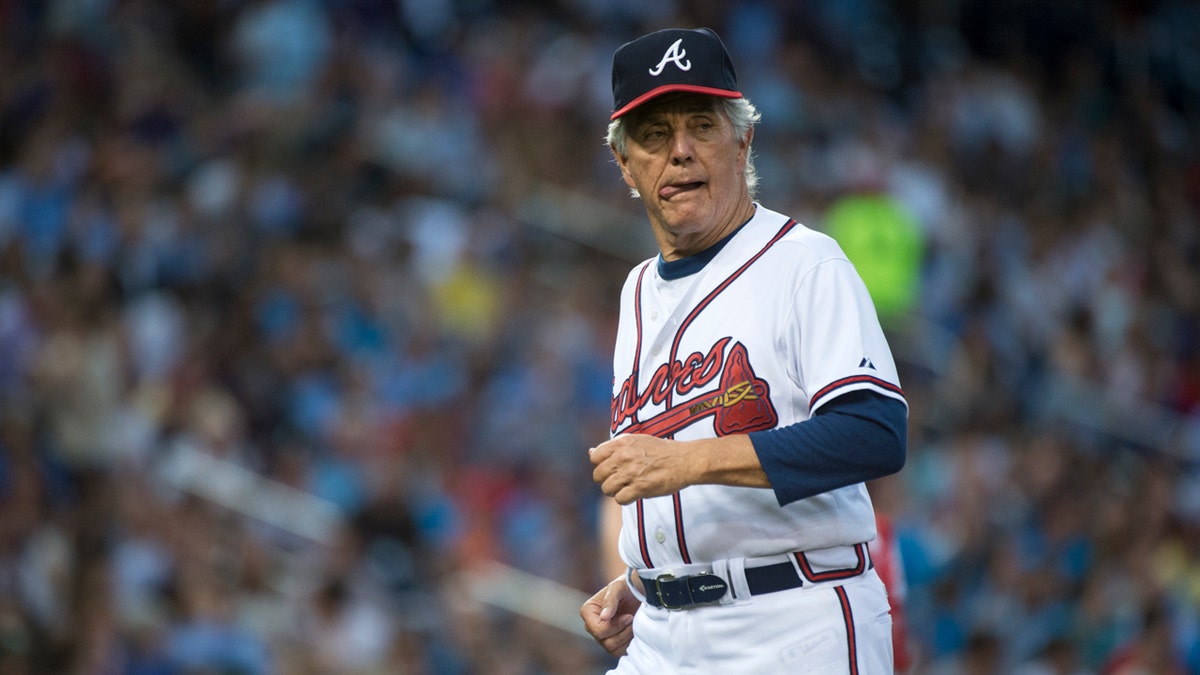
Rep. Roger Williams, R-Texas, coaches his party’s baseball team. (Photo By Tom Williams/CQ Roll Call)
Rep. Jake Ellzey, R-Texas, played right field last year. He moves to center field in place of Moore Wednesday night. Rep. Marlin Stutzman, R-Ind., patrols right field for Republicans.
Stutzman returned to Congress this year after an eight-year hiatus. Stutzman played in six games before, hitting .083. Stutzman used to pitch for the GOP. But his services out of the bullpen probably aren’t necessary. After all, Stutzman might not match up to other Hoosier State hurlers like Tommy John and Don Larsen. On the mound, Stutzman sports an 0-2 record with a 14.44 ERA in the Congressional contest.
That said, Williams does have a potential newcomer who can throw: Freshman Rep. Pat Harrigan, R-N.C., is a rookie and a fireballer.
«He’s my Ryne Duren,» said Williams of Harrigan.
To the uninitiated, Duren was a flamethrowing all-star in the 1950s and ‘60s – mostly with the New York Yankees and Cincinnati Reds. Duren wore Coke-bottle glasses. The line «Oh say can you see» during «The Star-Spangled Banner» took on a little more meaning for opposing hitters when Duren was on the mound with his fastball.
Williams says Harrigan can bring it. But his control needs work.
THE TRAGEDY OF PETER EDWARD ROSE
Rep. Linda Sanchez, D-Calif., enters her third year as the Democrats’ skipper. She’s the first woman to manage the team.
Women first played in the game in 1993. Former Rep. Ileana Ros-Lehtinen, R-Fla., along with former Sen. Blanche Lincoln, D-Ark., and current Sen. Maria Cantwell, D-Wash., broke the gender barrier. Both Lincoln and Cantwell played as House Members. Sanchez appeared in 11 games and is one of the best women to suit up. She hit .455, going 5-11 with two walks.
Sanchez bleeds Dodger blue. She historically wears a Fernando Valenzuela jersey while managing. Valenzuela was one of the most iconic Dodgers of all time, capturing the 1981 Cy Young Award with his screwball as «Fernandomania» seized southern California. Valenzuela died last fall.
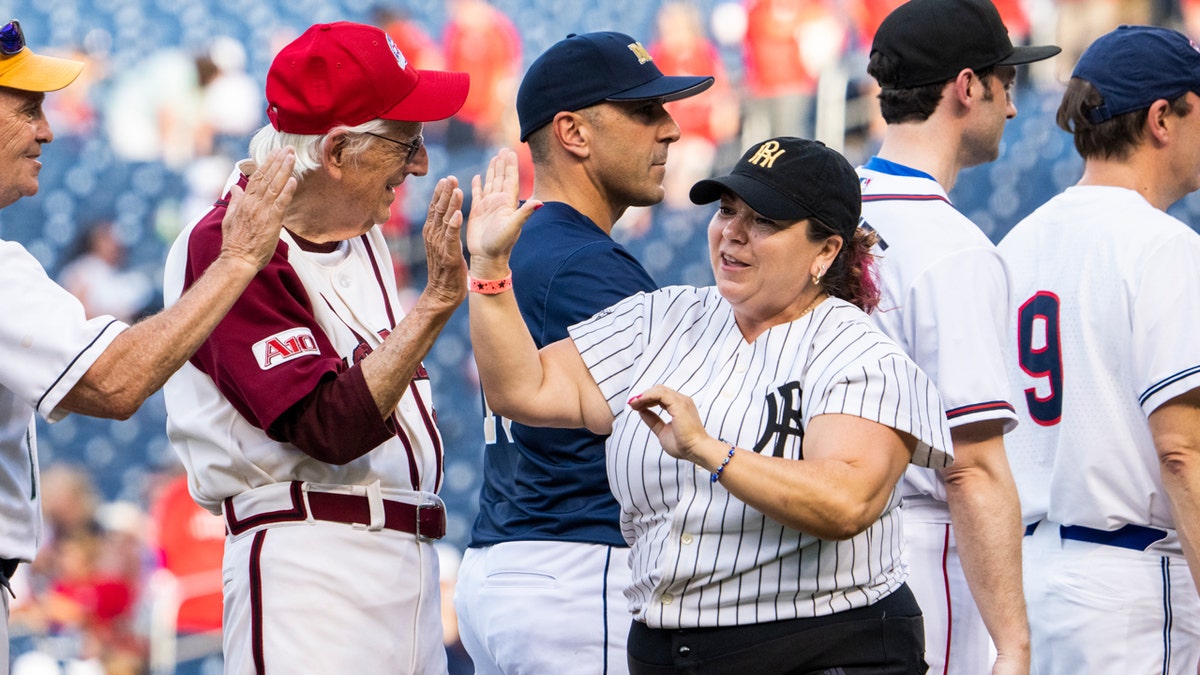
Rep. Linda Sanchez, D-Calif., coaches the Democrats. (Tom Williams/CQ-Roll Call, Inc via Getty Images)
But Sanchez used to pull for the «California» Angels – now the Los Angeles Angels. Sanchez switched her allegiance from the Halos to the Dodgers after the Angels let Nolan Ryan escape to the Houston Astros in late 1979.
One wonders how Sanchez would have felt if she were a New York Mets fan back when they traded Ryan to the Angels?
TRUMP’S SPENDING BILL HEADS TO SENATE WHERE REPUBLICANS PLAN STRATEGIC ADJUSTMENTS TO KEY PROVISIONS
Sanchez’s success at the plate hasn’t followed her into the Democrats’ dugout. Republicans have captured the last four contests – including the two which Sanchez managed. Republicans pounded the Democrats last year, 31-11. The GOP topped the Democrats 16-6 in 2023. There was no game in 2020 due to the pandemic. So the Democrats haven’t won since 2019. Republicans hold a 38-23 advantage in the «modern» era of the game. They began playing the Congressional game in 1909. But late House Speaker Sam Rayburn, D-Texas, halted the game because it became too violent.
There was a legendary collision at home plate in the 1956 game. Late Rep. Charles Curtis, R-Mo., was catching for the GOP. Rep. Olin «Tiger» Teague, D-Texas, steamrolled Curtis at the plate. Teague is buried at Arlington National Cemetery. But Teague buried Curtis at home in that game. Orderlies hauled Curtis off the old Griffith Stadium field on a stretcher.
Lawmakers resumed the game in 1962.

With her party hemorrhaging talent on the mound in recent years, Sanchez may be buoyed by an influx of freshmen – like Rep. John Mannion, D-N.Y. – in this year’s showdown. (AP Photo/Craig Ruttle)
Sanchez is buoyed by at least four new freshmen – or rookies – on her club. Reps. Dave Min, D-Calif., Derek Tran, D-Calif., John Mannion, D-N.Y., and Johnny Olszewski, D-Md.
«Our principal weakness has been not a lot of depth to our bullpen. And this year we’ve got a couple of freshmen that can throw. So we’re hoping that with those additions, we can do a lot better this year,» said Sanchez.
Expect Mannion to work in relief.
REPUBLICAN LAWMAKERS STAND FIRM AGAINST MUSK’S ‘KILL THE BILL’ ASSAULT ON TRUMP’S AGENDA
Like most Major League clubs, the Democrats need pitching.
«We had a great run for a little while when Cedric Richmond was on the mound,» said House Democratic Caucus Chairman Pete Aguilar, D-Calif., who pitches, catches and plays infield for the Democrats.
Former Rep. Cedric Richmond, D-La., is one of the greatest players in Congressional Baseball Game history. He pitched in college. He threw 80-mph-plus to stymie fellow lawmakers. Richmond boasted an 8-0 record and a miniscule 2.64 ERA.
But Richmond left Congress to work for former President Biden in 2021. The Democrats haven’t been formidable since.

Former Rep. Cedric Richmond, D-La., was one of the best baseball players to have ever seen the halls of Congress. (Photo by Caroline Brehman/CQ Roll Call)
Heading into Wednesday’s contest, Sanchez teased that her goal with the Republicans in the game is «making them cry.»
«But we come together and do something good for the area,» added Sanchez, noting the $2 million the game raises for children’s charities in the DC area.
But she concedes, «there’s always trash talk.»
HOUSE REPUBLICANS PUSH FOR SPENDING CANCELLATIONS AS ELON MUSK AND CONSERVATIVES DEMAND DEEPER BUDGET CUTS
So Democrats try to escape from their slump. The Democrats haven’t won under Sanchez. But they’re oh-fer since House Minority Leader Hakeem Jeffries, D-N.Y., took over in 2023.
«It’s my expectation that the Democratic comeback is going to begin in 2025 at the Congressional Baseball Game,» said Jeffries last week.
But the Brooklyn Democrat said the same thing two years ago.
«I think this is the year for the big, Democratic comeback,» said Jeffries in June 2023.
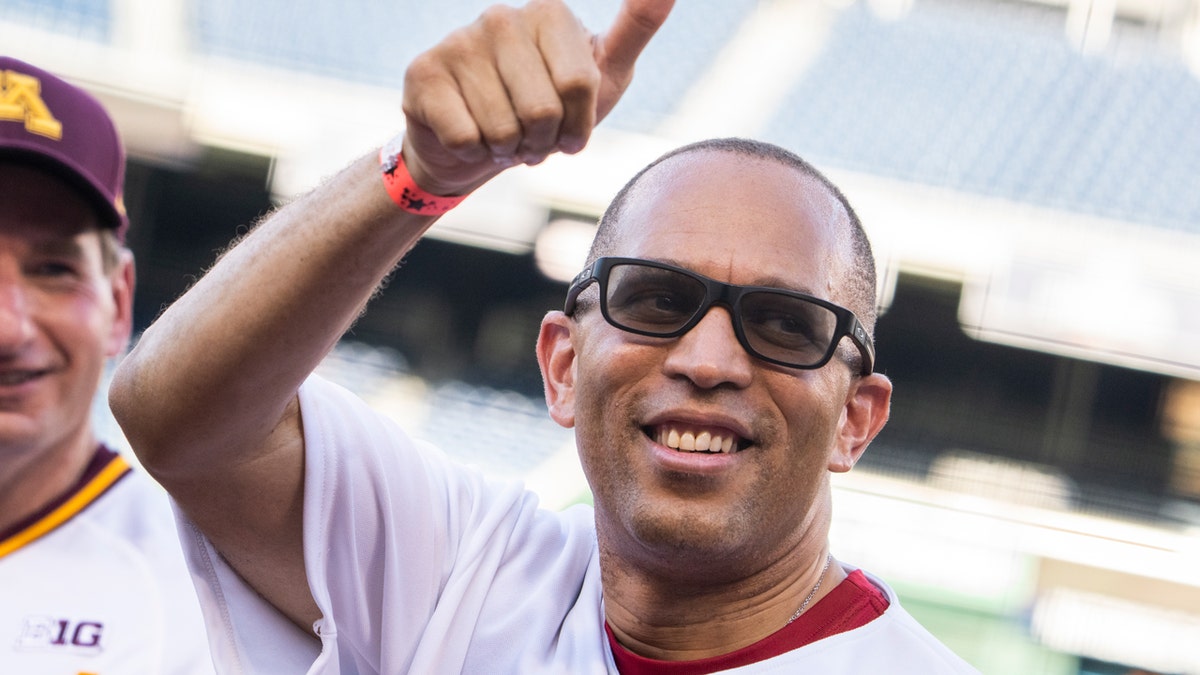
House Minority Leader Hakeem Jeffries, D-N.Y., has been hinging on a Democratic comeback for years. (Tom Williams/CQ-Roll Call, Inc via Getty Images)
So, I questioned Jeffries in the Capitol corridors late last week.
«You realize since you’ve been the Minority Leader that the Republicans have defeated the Democrats by a combined score of 47 to 1?» asked yours truly.
«I also realize that my record as an active member of the Congressional Baseball Game team, I believe, was 9-1,» replied Jeffries.
But is that because of Jeffries? Or Cedric Richmond?
Statistics are paramount in baseball. Whether you’re scoring at home. Or using the Congressional Budget Office. Jeffries is 1-6 hitting in his nine games on the Democratic squad. That’s good for a .167 average. Well below the Mendoza Line. But he did swipe seven bases.
And this year, Democrats will again try to steal a win against a talented Republican club.
CLICK HERE TO GET THE FOX NEWS APP
Gametime at 7pm ET on FS1 Wednesday. Yours truly will be on the call alongside colleague Kevin Corke.
-

 POLITICA2 días ago
POLITICA2 días agoCristina Kirchner advirtió que la pueden “meter presa” y lo relacionó con su candidatura a diputada provincial
-
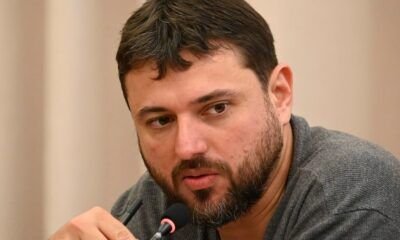
 POLITICA2 días ago
POLITICA2 días agoDetuvieron a Juan Grabois por la toma del Instituto Perón, cerrado por el gobierno de Milei
-

 DEPORTE2 días ago
DEPORTE2 días ago¿Dónde ver EN VIVO y ONLINE el Portugal vs. España por la final de la Nations League?

















